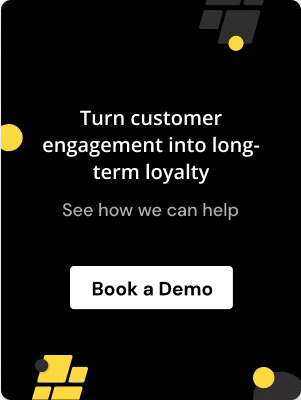.avif)
.avif)

Image Source: FreeImages
Customer loyalty is a lucrative goldmine — a fact that successful businesses understand and leverage extensively. One of the most effective strategies for nurturing customer loyalty is through loyalty apps. These apps are strategic marketing tools designed to encourage repeat customers by rewarding them with perks or incentives. The ultimate goal? To boost customer retention, foster stronger brand-consumer relationships, and increase profitability.
In this comprehensive guide, we'll delve into the world of loyalty apps, discussing their benefits for both businesses and customers, the types of loyalty programs, how to create a customer loyalty program, key metrics to measure success, how to calculate the cost and ROI, and potential risks to consider. We will also look at this from the perspective of Shopify, one of the leading ecommerce platforms.
Table of Contents
- Advantages of Launching a Loyalty App
- Benefits of Loyalty Apps for Your Customers
- Different Forms of Loyalty Programs
- Designing a Customer Loyalty App
- Evaluating Your Loyalty Program's Success
- Cost Analysis and ROI Calculation
- Potential Pitfalls of Loyalty Programs
- Why Choose Shopify for Your Loyalty App?
- How Nector Can Enhance Your Shopify Loyalty Program
Advantages of Launching a Loyalty App
1. Escaping the Price War: The digital revolution has made price comparison a breeze for shoppers. If customers start focusing only on the products and their prices, businesses may find themselves in a race to the bottom—a race which bigger players like Amazon often win.
One of the most significant advantages of loyalty apps is that they can help businesses break free from this price war. By establishing an emotional connection with customers, loyalty apps can help differentiate your brand and offer a highly personalized customer experience.
2. Enhancing Customer Retention and Minimizing Churn: The importance of customer retention cannot be overstated. Not only does it lead to higher revenue (loyal customers spend 67% more on average than new ones), but it's also less expensive to retain customers than to acquire new ones. Hence, if your business experiences high churn rates, you're missing out on potentially profitable, lower-cost business opportunities. Loyalty apps can significantly increase customer retention, turning one-time buyers into regular customers.
3. Augmenting Customer Lifetime Value (CLV): Customer Lifetime Value (CLV) is the net profit associated with a customer's relationship with your business. Loyalty apps can enhance CLV by boosting your customers' average order value and purchasing frequency. The result? Your customers will spend more money, more often, and stay with you for longer.
4. Transforming Customers into Brand Advocates: Rewarding customers who promote your business can turn your loyalty app into a potent acquisition channel. Loyalty apps often incorporate referral bonuses, encouraging customers to become brand advocates. This strategy can yield substantial benefits for businesses, as it leverages word-of-mouth promotion.
5. Boosting Purchase Frequency: Loyalty apps can motivate customers to buy more frequently, especially when it comes to low-margin products with shorter sales cycles. Features like loyalty tiers can be particularly effective in incentivizing frequent purchases.
6. Amplifying Average Order Value: Apart from increasing the frequency of purchases, loyalty apps can also enhance the value of each purchase, known as Average Order Value (AOV). Businesses can improve their AOV by rewarding customers based on their total spend.
7. Collecting Customer Data: Loyalty apps are powerful tools for collecting customer data. Every interaction—from purchase history to reward redemption patterns—offers insights into customer behavior, helping brands make informed marketing and strategic decisions.
8. Balancing Seasonality: Many businesses experience seasonal fluctuations in sales. Loyalty apps can help balance these fluctuations by offering special rewards or promotions during off-peak periods.
9. Strengthening Brand Communication: Lastly, loyalty apps can bolster your brand and improve customer communication. Regular updates about rewards, exclusive offers, and events provide touchpoints to engage with customers, fostering a stronger brand-customer relationship.
Benefits of Loyalty Apps for Your Customers
While loyalty apps are fantastic for businesses, they also offer significant benefits for customers.
Savings and Rewards: The most obvious benefit to customers: through discounts, redeemable points, and VIP perks, loyalty apps help shoppers save money.
Exclusive Access and Perks: Besides discounts, loyalty apps can also offer exclusive perks that enhance the customer experience, such as early access to new products or sales, special members-only events, and preferential customer service.
Personalized Experiences: With the data collected through loyalty apps, businesses can offer personalized recommendations and promotions that cater to individual customer preferences.
Fun and Engagement: Loyalty apps often involve elements of gamification—earning points, reaching new membership levels, and completing challenges—which can make shopping more engaging and fun.
Sense of Community: Well-designed loyalty apps can create a community of customers who share your values.
Different Forms of Loyalty Programs
There are four main types of loyalty programs—points-based, value-based, tiered, and subscription-based. Each has its own pros and cons.
Points-Based Programs: Points-based loyalty programs are perhaps the most common type. Customers earn points based on their purchases, which can later be redeemed for rewards or discounts.
Value-Based Loyalty Programs: Value-based loyalty programs reward customers based on the value they bring to the brand. This value could include social shares, reviews, referrals, or other forms of engagement.
Tiered Loyalty Programs: Tiered loyalty programs involve levels of membership that offer increasing rewards and benefits the more a customer spends.
Subscription-Based Loyalty Programs: In subscription-based loyalty programs, customers pay an upfront or recurring fee to gain access to exclusive benefits.
Designing a Customer Loyalty App
Creating a customer loyalty app requires careful planning. You'll need to consider your industry, customers, company size, and the kind of software you might need.
Different Loyalty Programs Suit Different Industries: The right kind of loyalty program for your business can depend partly on your industry.
Understand the Problem You're Looking to Solve: All the way back at the beginning of this article, we talked through the many and varied benefits loyalty programs can have for your business. Use this insight to structure your loyalty program.
Understand Your Customers: Creating an effective loyalty program hinges on understanding your customers' needs, preferences, and behaviors.
Account for Your Company's Size and Resources: Larger enterprises are likely to have the resources to implement sophisticated, multi-tiered programs, while small businesses might prefer simpler, easy-to-manage programs, such as a points-based system.
When to Implement a Loyalty Program: It's never 'too early' to think about a loyalty program for your brand, but equally, it isn't something you want to rush into.
Loyalty Program Software: Consider the software available to help with the implementation, management, and measurement of your loyalty program. The right software depends on your business size, the complexity of your chosen loyalty program, and of course your budget.
Evaluating Your Loyalty Program's Success: Key Metrics to Consider
Here are some key metrics to consider when assessing your loyalty program's effectiveness:
Average Order Value: Average order value (AOV) is the average amount a customer spends per transaction.
Purchase Frequency: A good loyalty program motivates customers to shop more frequently to accumulate rewards.
Customer Lifetime Value: Customer lifetime value (CLV) is the total revenue you can expect from a customer throughout their relationship with your business.
Revenue and New Customers from Word of Mouth: One of the significant benefits of loyalty programs is transforming customers into brand advocates.
Redemption Rates: Redemption rates measure the percentage of customers who redeem the rewards they've earned through your loyalty program.
Program Engagement: Customers who value a loyalty program are more likely to engage with it.
Customer Churn Rate: Customer churn rate refers to the percentage of customers who stop doing business with you during a given period.
Cost Analysis and ROI Calculation
All loyalty programs come at a cost. The key is to understand these costs upfront, so they can be measured against the expected benefits.
Upfront and Ongoing Costs: Loyalty program costs can be divided into two main categories: upfront and ongoing.
Calculating the ROI of Your Loyalty Program: To figure out the ROI from your loyalty program, you need to understand the net benefits derived from the program (revenue from increased sales, customer retention, etc.) and subtract the total costs of the program.
Potential Pitfalls of Loyalty Programs
While loyalty programs can yield huge benefits, they're not without their pitfalls. Here's where loyalty programs can go wrong and what you can do to avoid making common mistakes.
Unrealistic Expectations: Many businesses expect instant returns from their loyalty programs, but it takes time for these initiatives to gain traction and yield significant results.
Poor Communication: Lack of clear communication is another common issue.
Inadequate Rewards: If your rewards aren't valuable to your customers, they won't engage with your loyalty program.
Lack of Data Utilization: Data collected through loyalty programs is incredibly valuable, but often underutilized.
Cost Mismanagement: Loyalty programs can be costly, and without careful management, costs can outweigh benefits.
Why Choose Shopify for Your Loyalty App?
Shopify is a leading e-commerce platform that offers a wide range of features and integrations, making it an excellent choice for businesses looking to launch a loyalty app. It provides a robust ecosystem for creating and managing a loyalty program, and its flexibility allows for the customization of programs to fit the specific needs of a business.
How Nector Can Enhance Your Shopify Loyalty Program
Nector represents a new generation of Shopify loyalty apps, designed to create a seamless, engaging, and rewarding shopping experience for your customers. It goes beyond traditional loyalty programs by offering customized rewards, tiered loyalty levels, and a host of other features that not only incentivize repeat business but also foster a sense of community among your customers. By integrating Nector with your Shopify store, you can elevate your customer loyalty program to new heights.
Remember, this blog is not promoting Nector, but if you're interested in learning more about how Nector can enhance your Shopify loyalty program, feel free to explore further.
FAQs
Start Building Customer Retention That Lasts


.png)





